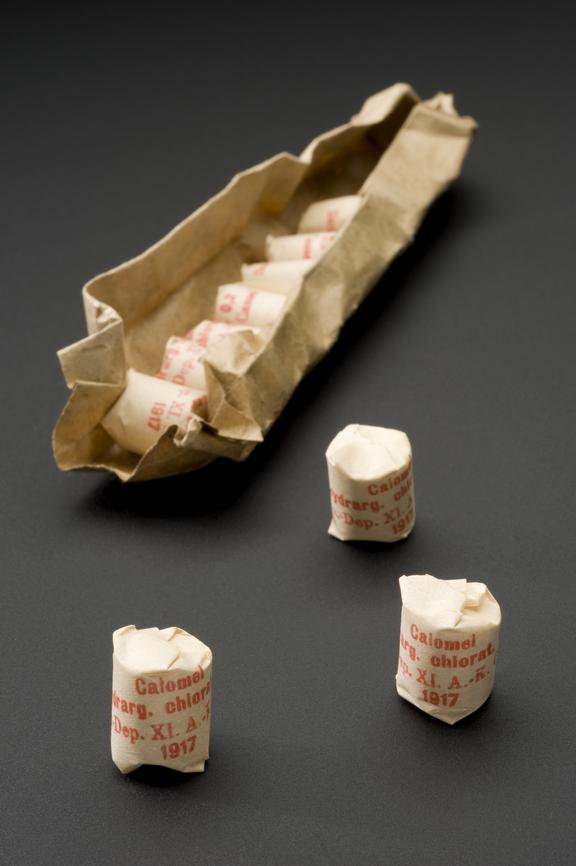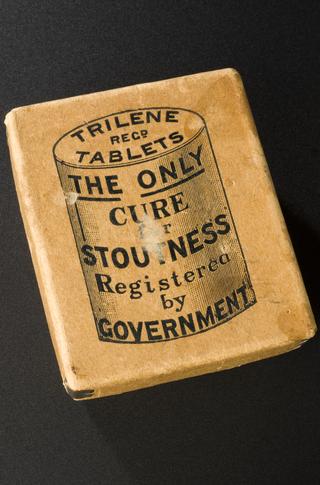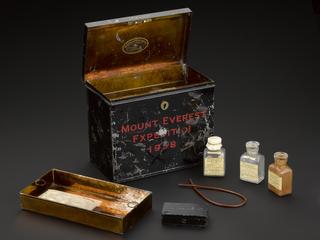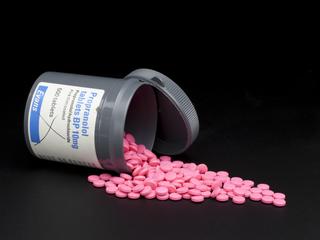

10 packets of mercurous chloride tablets in wrapping paper, German, military issue, 1917
Mercurous chloride (HgCl) is also known as calomel. It was a popular drug from the 1800s onwards as it contained mercury, a chemical that was claimed to cure many illnesses. However, it slowly poisoned those who used it because mercury is toxic.
Many of those taking such a drug would have been experiencing a venereal disease (VD) – probably syphilis. Calomel was used as an antiseptic and laxative during the First World War, but given the high rates of VD in the military it clearly proved useful in that context too. The packet contains calomel in tablet form to be taken orally. This packet was supplied by the 11th Army Corps of the German Army to its medical personnel and soldiers.
Details
- Category:
- Materia Medica & Pharmacology
- Collection:
- Sir Henry Wellcome's Museum Collection
- Object Number:
- A653640
- Materials:
- paper
- Measurements:
-
overall: 166 mm x 32 mm, .03kg
tablet: 11 mm 12 mm,
- type:
- calomel



